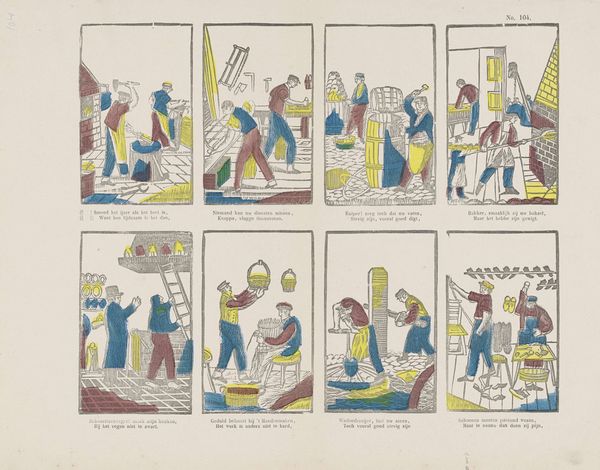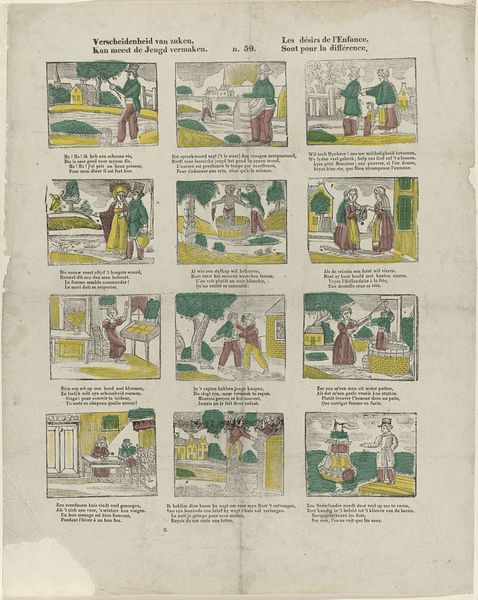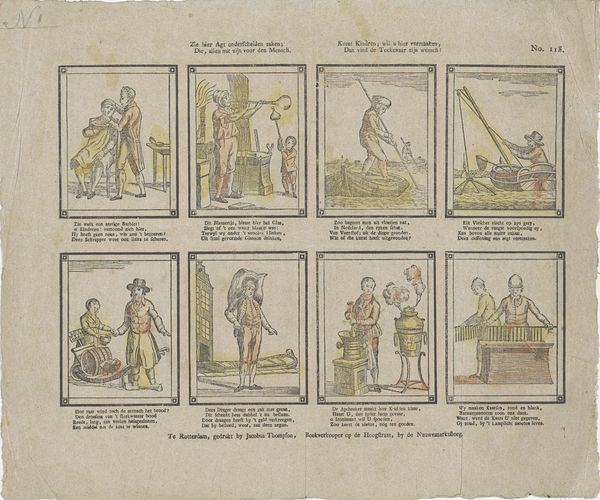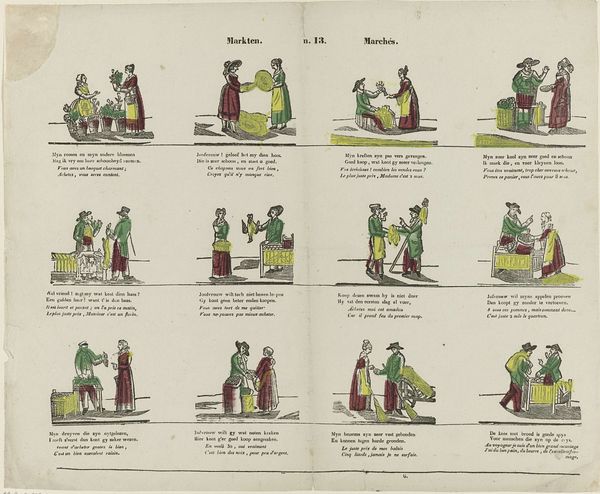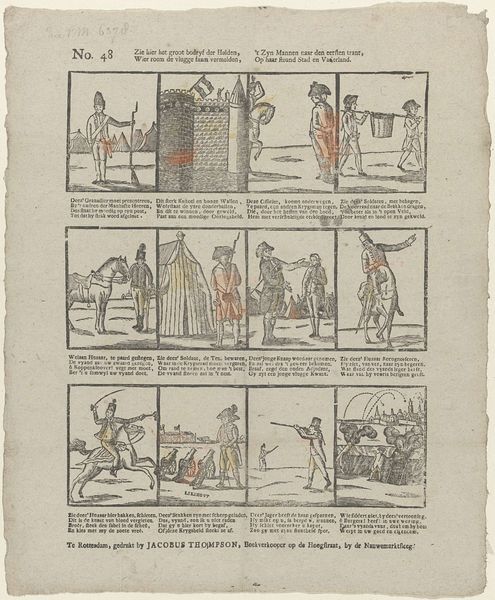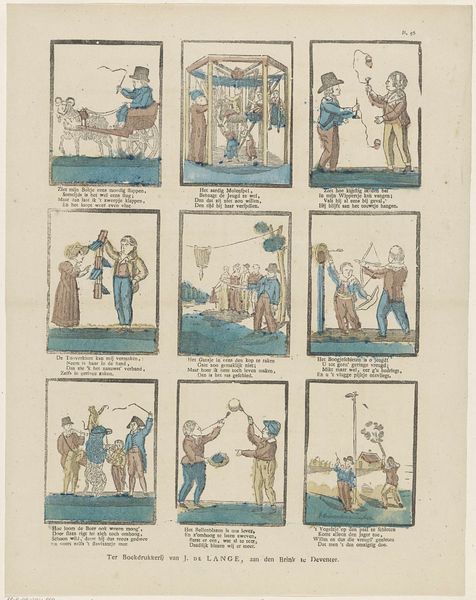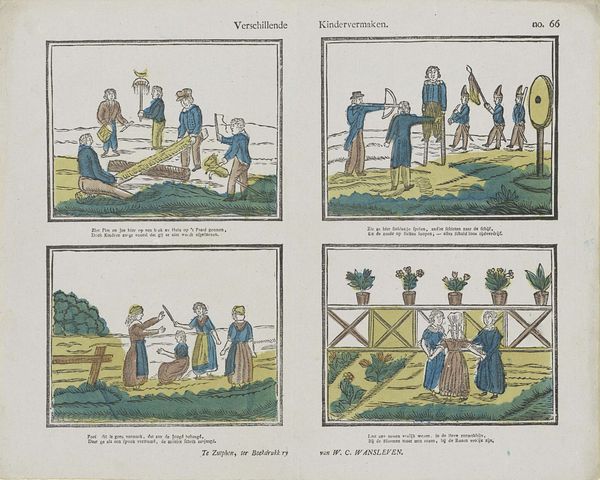![Menschen uit het daaglijks leven, Daar hun handwerk u bekend [(...)] by W. & J. Hissink](/_next/image?url=https%3A%2F%2Fd2w8kbdekdi1gv.cloudfront.net%2FeyJidWNrZXQiOiAiYXJ0ZXJhLWltYWdlcy1idWNrZXQiLCAia2V5IjogImFydHdvcmtzLzI4NGI2ZWU3LWRmMWYtNDIzMC04OGFmLTI4ZjYxZDZmMTg2Yy8yODRiNmVlNy1kZjFmLTQyMzAtODhhZi0yOGY2MWQ2ZjE4NmNfZnVsbC5qcGciLCAiZWRpdHMiOiB7InJlc2l6ZSI6IHsid2lkdGgiOiAxOTIwLCAiaGVpZ2h0IjogMTkyMCwgImZpdCI6ICJpbnNpZGUifX19&w=3840&q=75)
lithograph, print
#
narrative-art
#
dutch-golden-age
#
lithograph
# print
#
figuration
#
genre-painting
Dimensions: height 332 mm, width 418 mm
Copyright: Rijks Museum: Open Domain
Curator: Looking at this print, I'm immediately struck by its patchwork feel. The colors are muted, almost pastel, and the individual scenes, bordered by these thin, dark lines, resemble frames from a very old comic strip. There's a strange sort of order amidst what might otherwise be chaos. Editor: Indeed. This is “Menschen uit het daaglijks leven, Daar hun handwerk u bekend [(...)]", or "People from daily life, Because their craft is known to you," created by W. & J. Hissink, sometime between 1823 and 1836. It's a lithograph, a type of print, and it captures the everyday labors of ordinary people in the Netherlands during that period. Think about the historical context – the Dutch Golden Age had long passed. This piece signals the beginning of industrialization and middle class values in art. Curator: I'm fascinated by that relationship you're establishing to industrialization. Each vignette presents a different trade – I can see a blacksmith, a cooper, someone working with textiles. Are they presented as romantic ideals, or are we meant to recognize the coming disruption these crafts faced? Editor: I think it's both. There’s certainly an element of romanticizing these occupations, presenting them as virtuous and integral to society. Look at the accompanying text— it highlights the honesty and value of their work. However, displaying them together implicitly acknowledges their diverse contributions to a larger economic ecosystem about to undergo radical shifts. The question becomes one of visibility—who labors, how, and under what social expectations? Curator: The simplicity of the lines also strikes me. Each figure, while individualized in action, is still somewhat stylized and perhaps abstracted. It calls attention to the commonality and almost repetitive motion of the labor involved. They become representatives of larger socio-economic roles. Editor: I agree, there’s an attempt at collective identity embedded within the work itself. And look at the figures and placement in the setting! From this, one might infer narratives about economic life during the Post-Golden Age in the Netherlands. Curator: Reflecting on it, the piece invites a very thoughtful dialogue around labour, identity and social transition during a critical era. Editor: Yes, the politics of representation intersect with material conditions in very nuanced ways here.
Comments
No comments
Be the first to comment and join the conversation on the ultimate creative platform.
